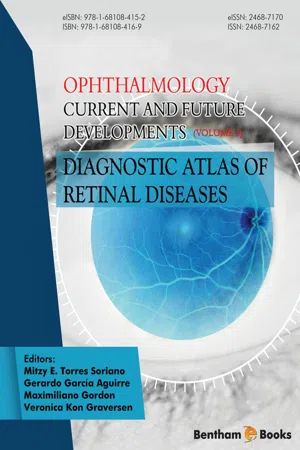
Ophthalmology: Current and Future Developments: Volume 3: Diagnostic Atlas of Retinal Diseases
- English
- ePUB (mobile friendly)
- Available on iOS & Android
Ophthalmology: Current and Future Developments: Volume 3: Diagnostic Atlas of Retinal Diseases
About This Book
This 3 volume set offers a comprehensive compilation which presents detailed information about ophthalmic (retinal, vitreous and macular) diseases. Key features of this set include:
Emphasis on practical features of clinical diagnosis
Concise and didactic presentation of key manifestations of diseases designed for rapid reference and target recall
A vast selection of illustrations to sharpen clinical problem-solving skills
Step by step treatment approaches to enhance the reader's ability to handle medical cases
Citations or relevant research articles in each chapter for further reading
The third volume of this set covers eye infections (bacterial and viral), inflammatory disorders and neoplasms. Written by a group of retina specialists, this book is an excellent resource for knowledge about retinal disorders. The streamlined format and evidence based medicine presented in the volume make this book the perfect reference for medical students, residents, general ophthalmologists and retina specialists.
Frequently asked questions
Information
Endophthalmitis
ESSENTIALS OF DIAGNOSIS
| Exogenous Endophthalmitis (EE) | • Postoperative Endophthalmitis * Acute. * Chronic. • Post-traumatic Endophthalmitis (Fig. 16) • Associated with infectious keratitis. |
| Endogenous Endophthalmitis (Ee) (Figs. 1, 21-23, 27, 28) | • Focal (anterior and posterior). • Diffuse (anterior and posterior). |
- Postoperative Endophthalmitis (PE):
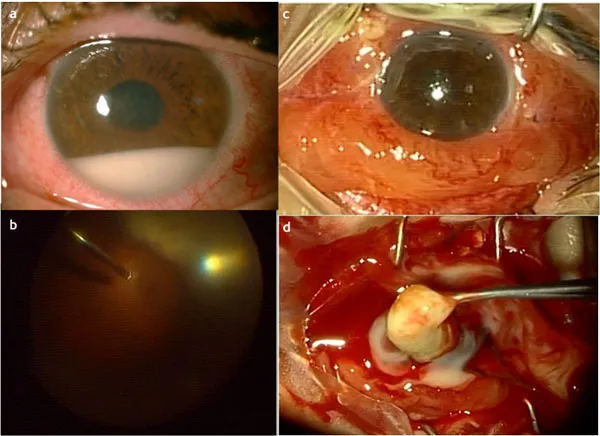
Klebsiella spp. Endogenous Endophthalmitis. 50-year-old woman. Diabetes. Klebsiella spp. hepatic abscess. a) Hypopyon and corneal haze. b) Identification of subretinal abscess during vitrectomy. c) Progression into panophthalmitis. d) Evisceration.

Postoperative Endophthalmitis: Hypopyon associated with fibrin clot. Hazy cornea, pupillary membrane. Gram-positive Coccus.
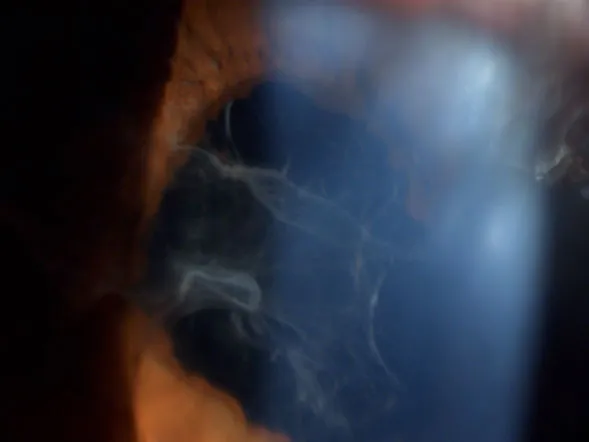
Exogenous Endophthalmitis. Anterior chamber fibrin.
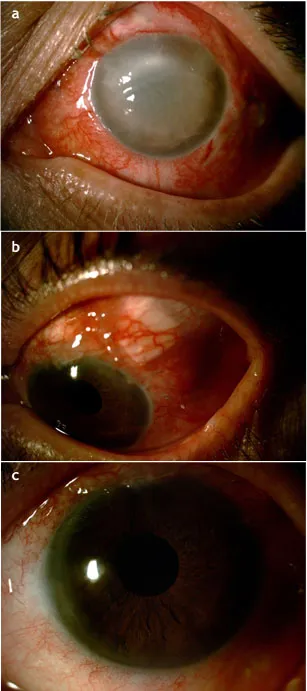
a) Late bleb-associated endophthalmitis. Not culture proven. Treated with intravitreal medication and vitrectomy. b) Scleral patch over trabeculectomy site. c) Good progress.
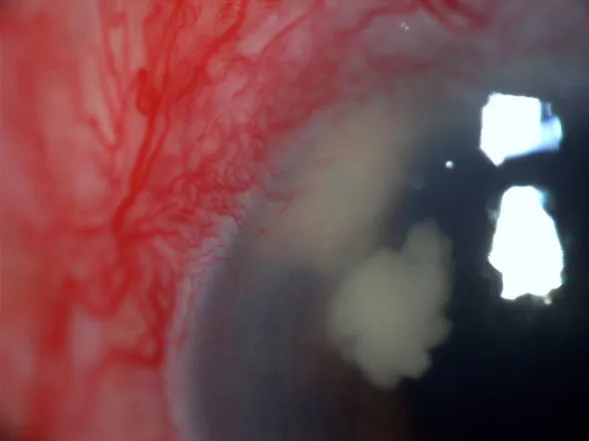
Corneal wound abscess after phacoemulsification.

a) and b) Panophthalmitis.

Acute-onset postoperative endophthalmitis. a) Hypopyon. b) After injection treatment and anterior chamber irrigation.
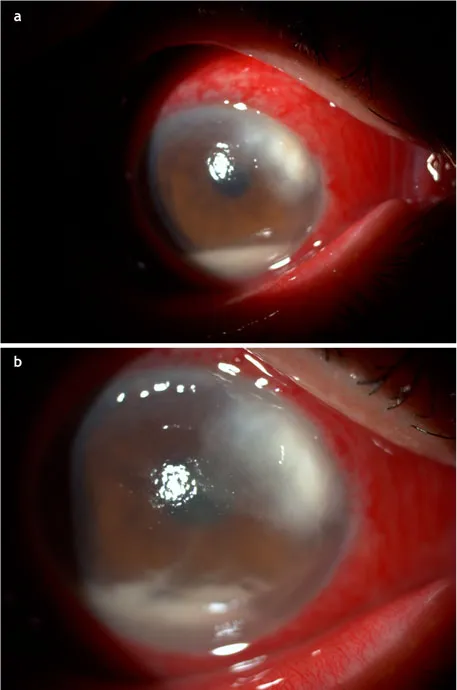
Acute-onset postoperative endophthalmitis. a) Hypopyon and corneal wound abscess. b) Negative progress. Bacterial source.
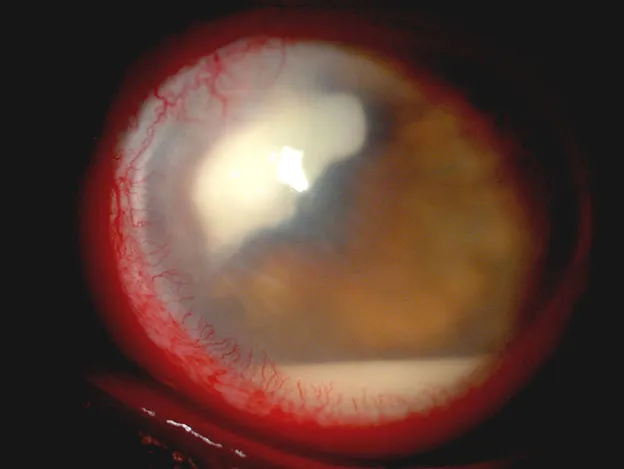
Exogenous fungal postoperative endophthalmitis. One month after phacoemulsification.

Postoperative bacterial endophthalmitis. Source of infection: phacoemulsification incision. One week after surgery.

a) Acute endophthtalmitis after phacoemulsification. Germ: St. epidermidis. b) 48 hours post intravitreal treatment.

Acute-onset postoperative endophthalmitis after cataract extraction. St. epidermidis.
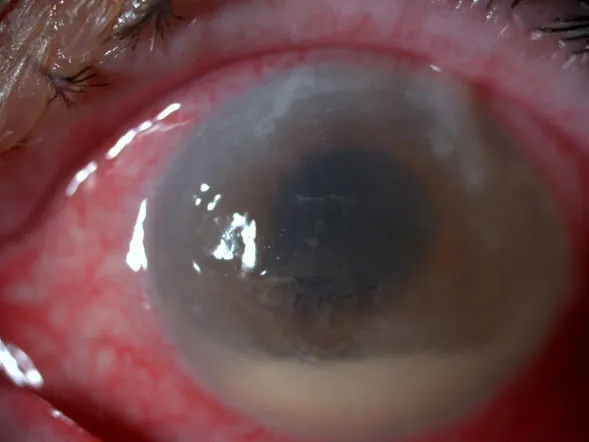
Acute postoperative endophthalmitis after phacoemulsification. Pseudomona aeruginosa.

Table of contents
- Welcome
- Table of Contents
- Title Page
- BENTHAM SCIENCE PUBLISHERS LTD.
- PREFACE
- List of Contributors
- Ocular Toxoplasmosis
- Ocular Tuberculosis
- Cytomegalovirus Retinitis
- Necrotizing Herpetic Retinopathies
- Ocular Syphilis
- HIV-Related Retinal Microangiopathy
- Neuroretinitis
- Endophthalmitis
- Acute Posterior Multifocal Placoid Pigment Epitheliopathy
- Multiple Evanescent White Dot Syndrome
- Multifocal Choroiditis
- Punctate Inner Choroidopathy
- Birdshot Retinochoroidopathy
- Serpiginous Choroiditis
- Diffuse Subretinal Fibrosis Syndrome
- Diffuse Unilateral Subacute Neuroretinitis
- Vogt Koyanagi Harada Disease
- Pars Planitis
- Sarcoidosis
- Retinoblastoma
- Cavernous Hemangioma of the Retina
- Von Hippel-Lindau Disease
- Astrocytoma Tuberous Sclerosis
- Retinal Vasoproliferative Tumor
- Melanocytoma
- Congenital Hypertrophy of the Retinal Pigment Epithelium
- Combined Hamartoma of Retina and Retinal Pigment Epithelium
- Choroidal Nevi
- Choroidal Melanoma
- Choroidal Metastasis
- Leukemic Retinopathy
- Primary Intraocular Lymphoma
- Idiopathic Uveal Effusion
- Hypotony Maculopathy
- Pregnancy-associated Retinal Diseases